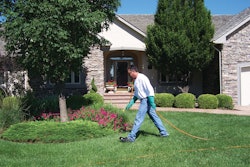
No one enjoys a bitter winter, but there’s always a bright side to it, right? At least a cold winter kills off all of the insects.
Well, not so fast.
Insects are very adaptive and there are plenty of means available to them to endure cold climates. For example, some bugs bury themselves underground or underneath a pile of leaves to hibernate. Insects like the arctic woolly moth create an alcohol within their bodies that allows them to avoid freezing at temperatures as low as -70 degrees Fahrenheit.
Other insects migrate, just like many birds often do. Most notably among them are monarch butterflies. These butterflies travel thousands of miles to warmer regions. Other insects burrow into tree bark or underneath leaves to weather the winter, and still more lay eggs in the fall that hatch in the spring.
Succinctly put, a small portion of insects die off in the winter, but the severity of the winter doesn’t make much difference. And in truth, there are plenty of insects that are beneficial to a household garden: Bees play a large part in pollination, ladybugs and dragonflies eat harmful pests that set up shop in backyards, and earthworms are vital for having a nutritious, aerated soil for plants and grass.
Take Advantage Before the Weather Gets Too Warm
With all of that said, the winter and spring are great times to get ahead on managing the more unsavory species of insects. Most pests go dormant when the temperatures get cold and try to find places to hide. This provides landscapers with a chance to dramatically aid their clients with potential insect problems.
Here are a few tips a landscaper can really use in the fight against insect infestations.
1. Clear the Debris
Winter and spring provide soggy conditions that have a way of collecting mold and mildew. In flowerbeds, on houses, inside, outside—you name it. Mold attracts insects and makes an excellent home for many bugs. And that’s just the start.
Leaf piles and other organic debris clump together in sodden lumps that are perfect homes for nesting insects. For landscapers, this provides a fantastic opportunity to eliminate the nesting insect population before they can become active and multiply.
2. Clean Gutters
Gutters are another breeding ground for pests. The moisture and presence of leafy debris provides a shelter for insects that isn’t usually seen and remains undisturbed.
Gutters need a thorough cleaning in spring and regular maintenance to remove new debris. Make sure to keep drainage pipes clear as well.
3. Prune Plants
Every homeowner wants a colorful garden. Problems arise, however, when homeowners allow plants near their home to grow without pruning. The larger a bush or collection of vegetation is, the more likely it is that insects are going to use it as shelter.
Be wary of fruit trees as well. If fruit is falling and remaining on the ground, it can attract insects in a short amount of time.
4. Mulch Carefully
Mulch does so much to aid in the health of a homeowner’s plants. It protects plant roots from severe weather, helps prevent weeds from growing, adds nutrients and aids in the overall appeal of a garden.
However, if mulch is piled up haphazardly, it also makes a great home for insects. Make sure not to use too much mulch and spread it evenly to prevent potential issues.


















